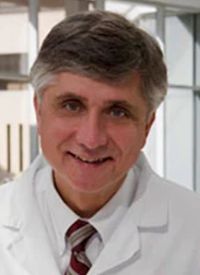Article
Tisagenlecleucel Induces High Rates of Durable Response in Relapsed/Refractory Follicular Lymphoma
Author(s):
Tisagenlecleucel led to a high response rate that proved durable, along with a favorable safety profile, in patients with relapsed/refractory follicular lymphoma following treatment with at least 2 prior regimens, according to interim findings from the phase 2 ELARA trial.
Stephen J. Schuster, MD

Tisagenlecleucel (Kymriah) led to a high response rate that proved durable, along with a favorable safety profile, in patients with relapsed/refractory follicular lymphoma following treatment with at least 2 prior regimens, according to interim findings from the phase 2 ELARA trial (NCT03568461) that were presented during the 2021 ASCO Annual Meeting.
At a median follow-up of 10.9 months, the complete response (CR) rate per independent review was 66.0%, meeting the primary end point of the study. Moreover, the objective response rate (ORR) was 86.2%.
“Tisagenlecleucel demonstrated high rates of durable responses in patients with relapsed/refractory follicular lymphoma. These data indicate that tisagenlecleucel is an effective therapy in patients with relapsed/refractory follicular lymphoma, including high-risk subgroups,” lead study author Stephen J. Schuster, MD, director of the Lymphoma Program, director of Translational Research, and Robert and Margarita Louis-Dreyfus Professor in Chronic Lymphocytic Leukemia and Lymphoma Clinical Care and Research at the University of Pennsylvania,said in a virtual presentation of the data.
Follicular lymphoma is the second most common type of non-Hodgkin lymphoma in the Western world and remains incurable despite therapeutic advances. Approximately 20% of patients with follicular lymphoma will develop progressive disease within 2 years of receiving frontline therapy, and the prognosis for patients with relapsed/refractory disease remains poor.
Tisagenlecleucel is an autologous CD19-directed CAR T-cell therapy that is approved for the treatment of pediatric and young adult patients with relapsed/refractory acute lymphoblastic leukemia and adult patients with relapsed/refractory diffuse large B-cell lymphoma.
The international, single-arm ELARA trial enrolled patients at least 18 years of age with grade 1, 2, or 3A relapsed/refractory follicular lymphoma without evidence of histological transformation or stage 3B disease who had not received prior CD19-directed therapy or allogeneic hematopoietic stem cell transplant.
Study treatment consisted of lymphodepleting chemotherapy by way of 25 mg/m2 of intravenous (IV) fludarabine daily for 3 days plus 250 mg/m2 of IV cyclophosphamide daily for 3 days or 90 mg/m2 of IV bendamustine daily for 2 days.
Tisagenlecleucel was administered as a single IV infusion in doses ranging from 0.6 to 6 x 108 CAR-positive viable T cells.
CR rate by an independent review committee served as the primary end point, with secondary end points of ORR, duration of response (DOR), progression-free survival (PFS), overall survival (OS), safety, and cellular kinetics.
As of the cutoff date of September 28, 2020, 98 patients had been enrolled, and 97 patients had been infused with tisagenlecleucel. Patients evaluable for efficacy (n = 94) had at least 6 months of post-infusion follow-up.
Patients were a median age of 57.0 years (range, 29-73), and the majority had an ECOG performance status of 0 (57.7%). The median number of prior treatments was 4 (range, 2-13), and the majority of patients were refractory to at least 2 regimens (76.3%). A total of 20.6% of patients had received prior treatment with a PI3K inhibitor.
Regarding infusion, 18% of patients received tisagenlecleucel in the outpatient setting. Bridging therapy was administered for disease stabilization in 44% of patients, and baseline imaging was also performed prior to infusion in patients who received bridging therapy.
The median infused dose of tisagenlecleucel was 2.06 x 108 CAR-positive viable T cells.
Additional results indicated that the responses were comparable among key high-risk and overall subgroups.
The median DOR was not reached, and the likelihood of a responding patient to remain in response after at least 6 months was 79% (95% CI, 66%-87%). Moreover, of the 31 PRs (20.2%) 12 of them (38.7%) converted to CRs between month 3 and month 6, with the exception of 1 patient.
The median time to next anti-lymphoma treatment was not reached.
The median PFS was not reached (95% CI, 12.1-not evaluable [NE]), nor was OS (95% CI, NE-NE). The 6-month PFS rate was 76% (95% CI, 65%-84%).
An analysis of cellular kinetics indicated that the persistence of CAR transgene was observed for up to 370 days in responding patients and 187 days in non-responding patients. The likelihood of achieving a response was comparable across dose quartiles, and no association between dose and the likelihood of experiencing a CRS or neurologic event was reported.
Regarding safety, all-grade and grade 3 or greater cytokine release syndrome (CRS) occurred in 48.5% vs 0% of treated patients, respectively. All-grade and grade 3 or greater neurological adverse reactions occurred in 9.3% vs 1.0% of patients, respectively. No treatment-related mortalities were reported.
The median onset of neurologic events was 8.5 days (range, 4-190), and the median time to resolution was 2 days.
One case of immune effector cell-associated neurotoxicity syndrome (ICANS) occurred within the first 8 weeks.
The median onset of CRS was 4 days (range, 1-14), and all cases were low grade.
The majority of CRS events and ICANS occurred in patients with bulky disease, at 74.5% vs 100%, respectively.
All neurological and CRS events resolved with appropriate intervention. In terms of adverse effect management, 34% of patients received tocilizumab (Actemra) and 6.4% received corticosteroids.
“Tisagenlecleucel is a promising therapy for the treatment of adult patients with relapsed/refractory follicular lymphoma following 2 or more lines of therapy,” concluded Schuster.
Reference
Schuster SJ, Dickinson MJ, Dreyling MH, et al. Efficacy and safety of tisagenlecleucel in adult patients with relapsed/refractory follicular lymphoma: primary analysis of the phase 2 Elara trial. J Clin Oncol. 2021;39(suppl 15):7508. doi:10.1200/JCO.2021.39.15_suppl.7508


















%20(2)%201-Recovered-Recovered-Recovered-Recovered-Recovered-Recovered-Recovered-Recovered-Recovered-Recovered-Recovered-Recovered-Recovered-Recovered-Recovered-Recovered-Recovered.jpg?fit=crop&auto=format)
%20(2)%201-Recovered-Recovered-Recovered-Recovered-Recovered-Recovered-Recovered-Recovered-Recovered-Recovered-Recovered-Recovered-Recovered-Recovered-Recovered-Recovered-Recovered.jpg?fit=crop&auto=format)
